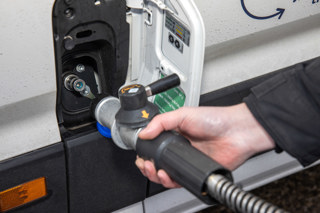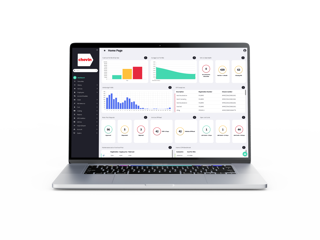Improving how we do anything can be difficult without appropriate inspiration and guidance. Whether we’re trying to progress our fitness and skills to be better at sport, learning to play a musical instrument, or impressing the family with our culinary abilities, we all need help to understand where we need to improve.
Inspiration is important because it opens our minds to what is possible – we yearn to perform at the same level as those who have so impressed us with their commitment and their success. Guidance is then essential because, if we want to emulate them, we need to know how they did it so we can replicate their journey.
While on that journey, we need to constantly check our progress to keep us on track and see how our efforts compare. We all constantly do this in many small ways.
This is the essence of benchmarking – the process of comparing our performance with that of others to see where we stand. And we can use it to improve how we manage our fleets.
Are we performing well and satisfied with where we are currently? Are we about average? Or do we lag behind and need to make improvements to catch up with our peers?
In fleet safety and risk management it can be especially helpful. We constantly hear stories of how some companies have reduced incident rates and others have improved fuel efficiency, and that those applying best practice can demonstrate massive reductions in operating costs as a result.
Running a fleet can be one of the most expensive operational costs in a business so the possibility of such savings can have a material effect on the company’s performance overall.
The best performers
So what are the companies with the biggest gains doing better than anyone else? What do their policies look like? How are they managing drivers and vehicles to bring down operational costs?
Throughout 2019 we will run a series of articles to help fleets benchmark against others so they can improve performance.
To start, we’re going to look at broad levels of risk management and where the average company sits.
A good place to kick-off is the Driving for Better Business online fleet risk assessment. It is free to complete and you’ll get a comprehensive report at the end to show how your answers compare with the averages of around 500 other fleets that have already completed it.
If you employ five or more people, under the Management of Health and Safety at Work Regulations 1999 you are required to make written risk assessments of how your business activities could impact employees and others.
The Health and Safety Executive (HSE) is clear that this legislation extends to work-related driving, as cars and vans used for business are considered to be an extension of the workplace. Even if you employ fewer than five you still have a legal duty of care to ensure your firm’s driving activities don’t put drivers or other road users at risk.
Developed in conjunction with FleetCheck and the Freight Transport Association (FTA) Van Excellence programme, it is ideal for fleets that are largely focused on company cars, grey fleet and light commercial vehicles.
Some of the questions are based around legal compliance and use the HSE’s guidance on Driving for Work as the basis for what all companies should be doing as a minimum.
What is good practice?
Then there are questions around good practice that, while they may not be legal requirements, are policies or activities that many successful fleets rely on to deliver a high level of performance and risk management. The beauty is that you don’t need to score 100% to demonstrate compliance, but the gaps highlight the types of activity the best-run fleets will be implementing.
The first section covers the company and starts to build a picture of your fleet, looking at the operational policies and processes you have in place. For a company to be meeting its legal obligations on risk management, it should be scoring around 85-90% in this section. Yet the average score is just 64% suggesting that many are not managing fleet risk as well as they need to.
Two of these important questions relate to recording fleet activity and monitoring driver performance. It would be prudent to ensure the capabilities and benefits of these systems are fully understood as they can contribute enormously to any improvements you might want or need to make.
Fleet managers need to have a robust way of identifying trends – especially ones that indicate rising costs or accident rates – and then tracking the effectiveness of any corrective action. If it isn’t measured, it can’t be improved.
A key element of this section relates to the company’s Driving for Work policy and what rules it sets out for drivers. This can be a common anxiety for directors and fleet managers who want to know if their policy is up to scratch and what a good policy looks like.
The Driving for Better Business contains example policies and driver handbooks from some of our Business Champions such as Arval, McLaren Automotive, Amey and Gateshead Council. This allows you to see how others deal with similar issues and use them to improve your own.
Fleet software is also vital to help cut the time and resource needed to keep on top of the issues in the three remaining sections.
Managing drivers
In the section on managing drivers, the focus is on ensuring you have all the information you need about the people you ask to drive on your behalf, including their health and driving record and the level of risk they are exposed to. Again, we see the average score of 60% lagging someway behind what should be a minimum acceptable level of around 75-80%.
One common area where companies fall below required standards is the failure to keep adequate records of fleet activity and driver behaviour. This means the issue isn’t being managed properly, directors aren’t aware of the true business costs and worrying trends don’t get identified and corrected.
Management of vehicles is another important subject as poor checking and maintenance regimes can significantly increase both the costs to the business and the risk that one of your vehicles could be at the centre of a serious crash.
The average user score here is 66% and is much closer to the required level of around 70-75% but this leaves a lot of room for fleet managers to pursue good practice and see some significant benefits they wouldn’t otherwise achieve.
The last section – assessing the risk associated with journeys – highlights the lowest average user score at 58%. However, as with vehicles, fleets should be aiming to hit 70-75% here so there are a lot of businesses not reaching the level of journey risk management they really should be achieving.
Overall this means fleets are, on average, achieving an overall score of 62% when they should really be hitting 75-80%.
In future articles, we will look at some of the common gaps from each section in more detail, including examples of how some of our Driving for Better Business champions have dealt with these challenges.
By Simon Turner, campaign manager a Driving for Better Business.
If you’d like to see where you currently sit with regard to general fleet risk management, then please visit www.fleetriskcheck.co.uk which will give you a clear idea of the main issues fleet managers should be addressing.





















Login to comment
Comments
No comments have been made yet.